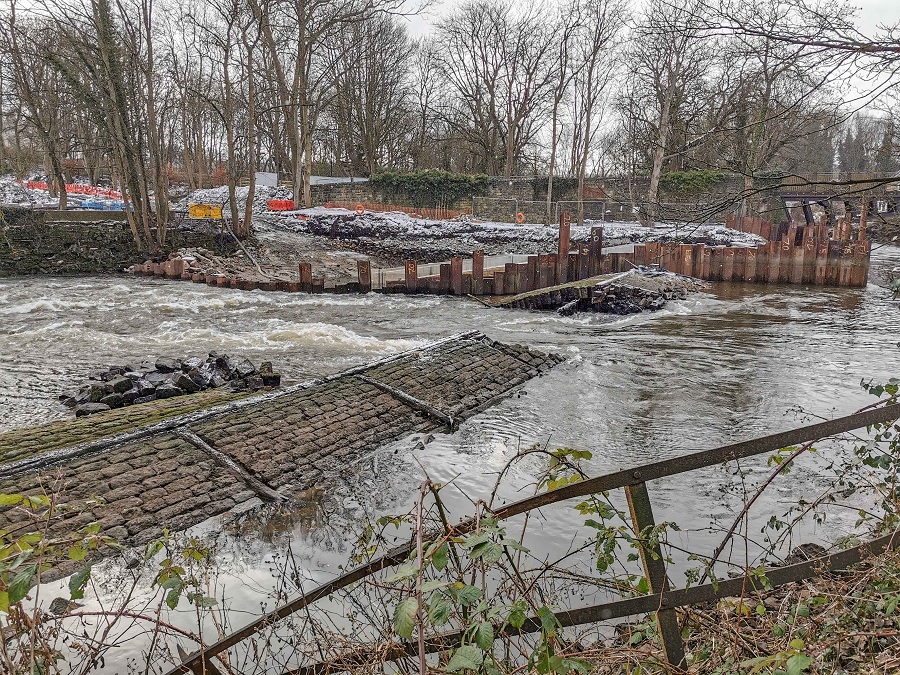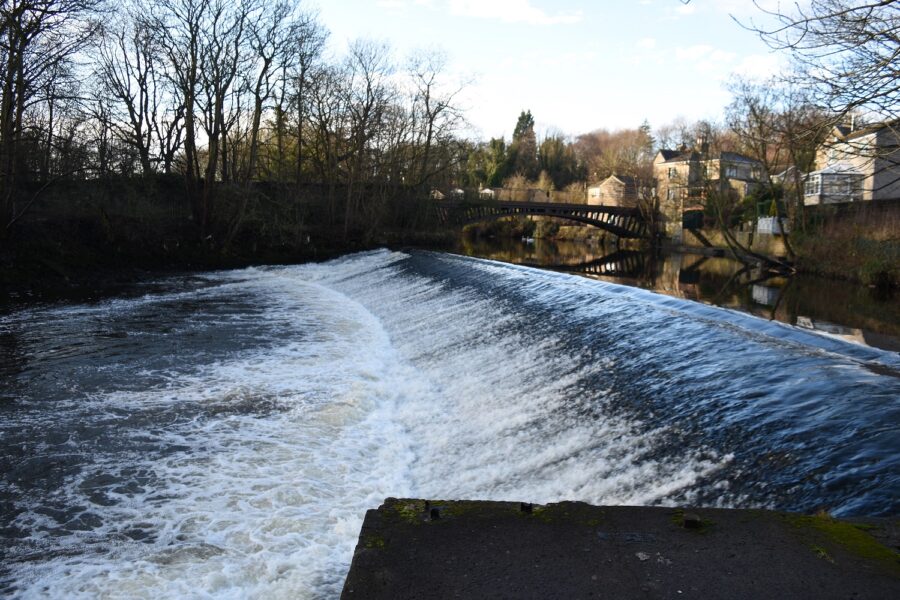By John Baron
The construction of a fish pass is ‘likely’ to have contributed towards historic Newlay Weir being badly damaged during a storm, an independent report has confirmed.
Grade II Listed Newlay Weir partially collapsed last February following high levels of the River Aire caused by Storm Christoph. A large portion of the weir was washed downstream.
The Environment Agency last July asked engineering company Arup to investigate the reasons for the weir’s partial collapse.

At the time of the collapse work was being carried out on a £2.7 million project to install fish passes at Newlay, Armley, Kirkstall and Saltaire – and Arup’s report, which has now been published, has said the works could have contributed to the collapse. The report concludes:
“Temporary works are likely to have contributed to the collapse, through changing the flow patterns over the weir during Storm Christoph and the preceding high-flow events, which may have resulted in localised erosion to the riverbed in front of the weir.
“This could lead to the progressive collapse mechanism described in the report.”
The report says the weir, which dates back to 1690, was previously in a fair condition. It report adds:
“Hydraulic modelling of the river showed that the works in the river channel would have increased depths and velocity slightly, but not to a significant extent that it would be sufficient to cause failure on its own.
“The sheet piles were angled across the face of the weir and this was observed to direct flow across the face of the weir and create turbulent flow patterns. This could have caused localised erosion to the bed in front of the weir and potentially contributed to the failure. The sheet piles pushed the main flow and velocity towards the centre of the weir and potentially contributed to erosion in front of the weir.”
The Environment Agency and Leeds City Council are currently considering the report before deciding what actions to take about the future of both the weir and fish pass.

Newlay Conservation Society chair Martin Hughes said he was amazed the report had taken so long. He said the fish pass remained an eyesore and could not function as intended without the weir in place.
Mr Hughes has written on behalf of Horsforth Civic Society and Newlay Conservation Society to the Environment Agency, Leeds City Council, Pudsey MP Stuart Andrew and Horsforth Town Council. He said:
“In these e-mails I am seeking support or opinions from them about ways forward, based on the prime feeling by residents that without the weir in place the redundant fish pass should be removed. It cannot serve its purpose and will remain a site for anti-social behaviour and risk of injury to those who insist on clambering over it.
“I can’t see the weir being restored as it re-creates an increased flood risk, will have a prohibitive cost and puts back something that has no current function. The industrial function of the weir has long since gone. That leaves the fish pass, which is not fit for purpose.”
An Environment Agency spokesperson said the future of the weir was a ‘complex issue’ and added:
“The independent review into the collapse of Newlay Weir, undertaken by Arup, has now been issued. This is a complex issue and we are now considering the report’s findings and recommendations in detail and what the next steps should be for the weir.”

The Newlay goit situated in Rein Road, Newlay, was created in the 12th century on land given by Nigel de Horsforde for the monks to provide power for their cornmill at Kirkstall Abbey. Newlay Weir was built in about 1690 to provide increased flow of water to the goit for improved power for Kirkstall Forge.

